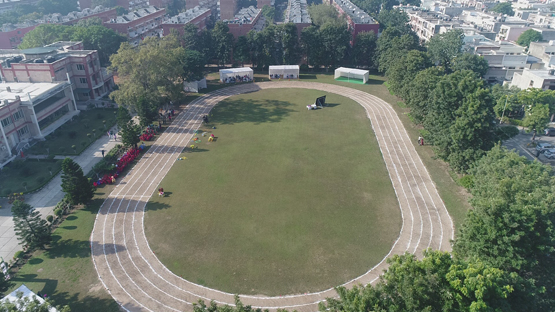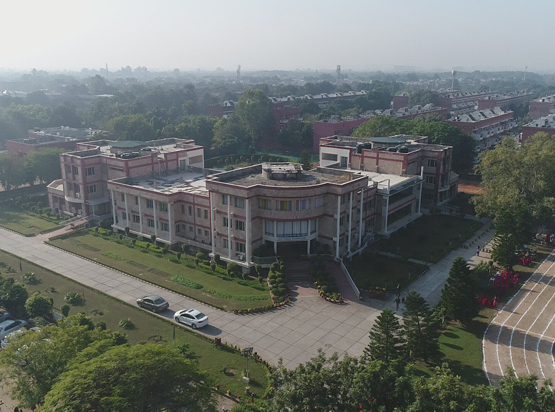CURRICULUM
Ours is a developmental curriculum. One that is aware and sensitive to the needs of its students at various periods of time, their aptitudes and the skills and knowledge they needs to acquire. At Northridge we are sensitive to the fact that however well planned; the curriculum cannot presume to either be static or the ultimate one. It necessarily needs to be one whose essence is open and dynamic. It is Holistic.(Learn more about our holistic approach including our unique and powerful “Saturdays of Self Discovery” Programme)
This is why the curriculum at Northridge is beyond merely being student centric. It takes cognizance of their varied aptitudes or ‘multiple intelligences’ of each of its students and both nurtures and strengthens them. How is it done at Northridge?


Verbal-Linguistic Intelligence: Nurtured at Northridge through activities in creative writing, public speaking, theatre and taught how to analyze and organize information in written form.
Mathematical-Logical Intelligence: Nurtured at Northridge through activities like math games, science experiments and dealing with mathematical concepts involving deductive reasoning, and problem solving.
Musical Intelligence: Nurtured at Northridge through activities such as composing and singing songs, and basically learning in rhythmical ways.
Bodily-Kinesthetic Intelligence: Nurtured at Northridge through activities where they build models, dramatize events, and dance, all in ways that relate to the content of that day’s subject matter. Other activities that contribute to it also include sports, athletics and yoga.
Visual-Spatial Intelligence: Nurtured at Northridge through activities that involve exploration of a subject area using diverse art media, puzzles, charts, and pictures.
Interpersonal Intelligence: Nurtured at Northridge by providing opportunities in cooperative learning, peer teaching and developing skills as they solve problems, answer questions, create learning games, brainstorm ideas and discuss that day’s topic collaboratively.
Intrapersonal Intelligence: Nurtured at Northridge by providing opportunities to explore the area of study through research, reflection, or individual projects.
Naturalist Intelligence: Nurtured at Northridge through activities that teach the students how to discriminate amongst and categorize or classify abilities the abundance of natural materials both within and outside their setting.
ASSESSMENT
Performance is most often viewed in the form of formative and summative assessment. Formative assessment is ongoing and provides information needed to adjust teaching and learning. Summative assessment focuses on a particular point in time– often at the conclusion of an activity. However, at Northridge the same is done using the rubrics, portfolios system. The rubric simply lists a set of criteria, which defines and describes the important components of the work being planned or evaluated. The given criterion is then stated in several different levels of completion or competence, with a weighted score assigned to each level. In addition, instead of grading students solely on standardized tests, unit tests and quizzes, at Northridge the students also prepare a portfolio that serves as a compilation of student work meant to show growth over time. Portfolios are a culmination of student work using all types of media, such as written work, paintings, drawing, video, computer presentations, audio tapes, and any other medium the teacher, or student may find beneficial in expressing knowledge of the subject(s).

TEACHING METHODS
“Teaching…. should encompass different alternative delivery options (materials, media, and methods)…. allowing teachers to become facilitators instead of broadcasters of new information”
– Jones, 1979In a paradigm shift from traditional education that focused on right brain activity, at Northridge we follow the Whole Brain Teaching Approach. This is essentially a system that utilizes all areas of the brain, keeps children engaged throughout their lessons, and helps them retain much more information than the standard lecture-discussion model.
The paradigm shift also includes a shift from “teaching for learning” to “teaching for understanding” where the students accumulate positive educational experiences and the capability for creating solutions.
In addition to didactic presentations we at Northridge are using innovative teaching strategies such as brainstorming, case-based small-group discussions, problem and project based learning, mind mapping, Z to A approach yet leaving ample scope for independent learning. These strategies involve learners in higher levels of thinking, promotes peer learning and creates synergy. While promoting critical thinking these strategies allow for focused learning and the learners to progress at their own rate.
TECHNOLOGY IN EDUCATION
I hear and I forget. I see and I believe. I do and I understand.
– ConfuciusAcross the world, information technology is dramatically altering the way students; faculty and staff learn and work. In the new paradigm of learning, the concepts of paperless and penless classroom are emerging as an alternative to the old teaching learning methods. Nowadays there is democratization of knowledge where the role of the teacher is changing to that of facilitator.
At Northridge too we have responded to this changing role of education which is inevitable with the introduction of multimedia technology and the spawning of a technologically-savvy generation of youths.
The idea is to create an active learning environment with an effective blend of innovative classroom, and outdoor activities along with projects and multi media.
By incorporating digital media elements into the class, the students are able to learn better since they use multiple sensory modalities, which would make them more motivated to not only pay greater attention to the information presented but to retain the information better too.

 Day
Day Lunch
Lunch